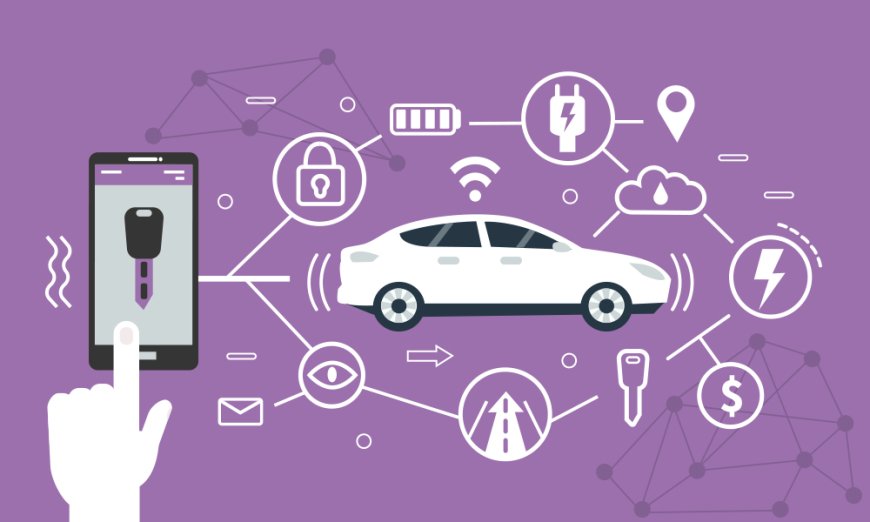Global Automotive IoT Market Size is Projected to Witness of US$ 712 Billion in 2033

As per Fact.MR, a provider of market research and competitive intelligence, the global Automotive IoT Market is expected to reach a market value of US $ 712 Bn by the end of 2033 while rising at a CAGR of 21.3% during the forecast period (2023–2033).
Automotive IoT, or the Internet of Things in vehicles, involves integrating internet-connected devices to enhance the functionality and efficiency of cars. This technology provides real-time monitoring of vehicle performance, improving safety through advanced driver assistance systems. Automotive IoT enables predictive maintenance, identifying and addressing potential issues before they cause breakdowns. It improves traffic flow and fuel efficiency by allowing vehicles to communicate with each other and traffic infrastructure.
For More Insights into the Market, Request a Sample of this Report:
https://www.factmr.com/connectus/sample?flag=S&rep_id=8726

Key Takeaways:
US Automotive IoT market is expected to account for a CAGR of 20% during the forecast period. Moreover, the US market is predicted to witness a market size of US $ 229.4 Bn with an absolute growth of US $ 192.3 Bn till 2033.
The UK market is predicted to witness a market size of US $ 35.8 Bn by 2033 and is predicted to witness a CAGR of 20.4 % from 2023–2033 (during the forecast period). Key companies in the automotive sector are collaborating with artificial intelligence companies to form advanced driving experiences.
Key Segments of Automotive IoT Industry Research Report
By Offering :
Hardware
Software
Services
By Connectivity Form :
Embedded
Tethered
Integrated
By Application :
Navigation
Infotainment
Telematics
By End-User :
OEM
Aftermarket
By Region :
North America
Latin America
Europe
Asia Pacific
Middle East and Africa
Additionally, it offers connected services like navigation and supports fleet management with features such as location tracking and route optimization.
The Automotive IoT market is experiencing growth driven by the rising demand for connected and autonomous vehicles, which enhances safety and efficiency. Additionally, the integration of IoT technologies is accelerated by the development of smart cities and infrastructure, along with the increasing need for real-time data for predictive maintenance and advanced driver assistance systems.
The growing trend of connecting vehicles to the Internet, known as the Internet of Things (IoT), raises serious concerns about cybersecurity in the automotive industry. Moreover, vehicles are becoming more vulnerable to unauthorized access and malicious attacks. The diverse components and systems within the automotive IoT ecosystem, including sensors, communication modules, and software, create challenges in integration and coordination.
Market Competition
Key automakers in this intensely competitive market are integrating IoT technologies into their vehicles to enhance features such as infotainment, navigation, and safety systems. Leading players include Major vendors in the automotive IoT Companies including NXP Semiconductors, Harman, Robert Bosch, Thales, TomTom International, IBM, Geotab Inc., Texas Instruments, and Intel Corp.
In December 2022, TomTom, a specialist in geolocation technology, collaborated with Amazon Web Services (AWS), Meta, and Microsoft to establish the Overture Maps Foundation. This foundation aims to create interoperable open map data and will be governed by the Linux Foundation.
Get Customization on this Report for Specific Research Solutions:
https://www.factmr.com/connectus/sample?flag=RC&rep_id=8726
Winning strategies
Market Giants are incorporating edge computing solutions directly into vehicles, enabling faster data processing and reducing latency, which is crucial for real-time applications such as autonomous driving and advanced driver assistance systems.
Major players are strategically customizing their IoT offerings to meet the distinct requirements of smart mobility solutions. These tailored solutions are designed to address the specific needs of emerging trends in urban transportation.
Using artificial intelligence (AI) algorithms to develop predictive analytics for maintenance is a great decision in this industry. They analyze data from IoT sensors in vehicles to predict and prevent potential issues before they cause breakdowns, improving vehicle reliability and reducing repair costs.
By 2033, the Japanese market is anticipated to reach a value of US$ 52.1 billion, exhibiting an absolute dollar growth of US$ 44.1 billion. With a growth rate of 24.1% from 2018 to 2022, it is projected to continue expanding at a CAGR of 20.7% from 2023 to 2033.
In China, the market is forecasted to attain a value of US$ 61.7 billion by 2033, with an absolute dollar growth of US$ 53.5 billion. Having experienced a CAGR of 26.7% from 2018 to 2022, it is expected to sustain growth at a CAGR of 22.4% from 2023 to 2033.
The South Korean market is poised to reach US$ 29.1 billion by 2033, demonstrating an absolute dollar growth of US$ 25 billion. With a CAGR of 25.8% from 2018 to 2022, it is anticipated to grow at a CAGR of 21.7% from 2023 to 2033.

 swatichaudhari
swatichaudhari 










